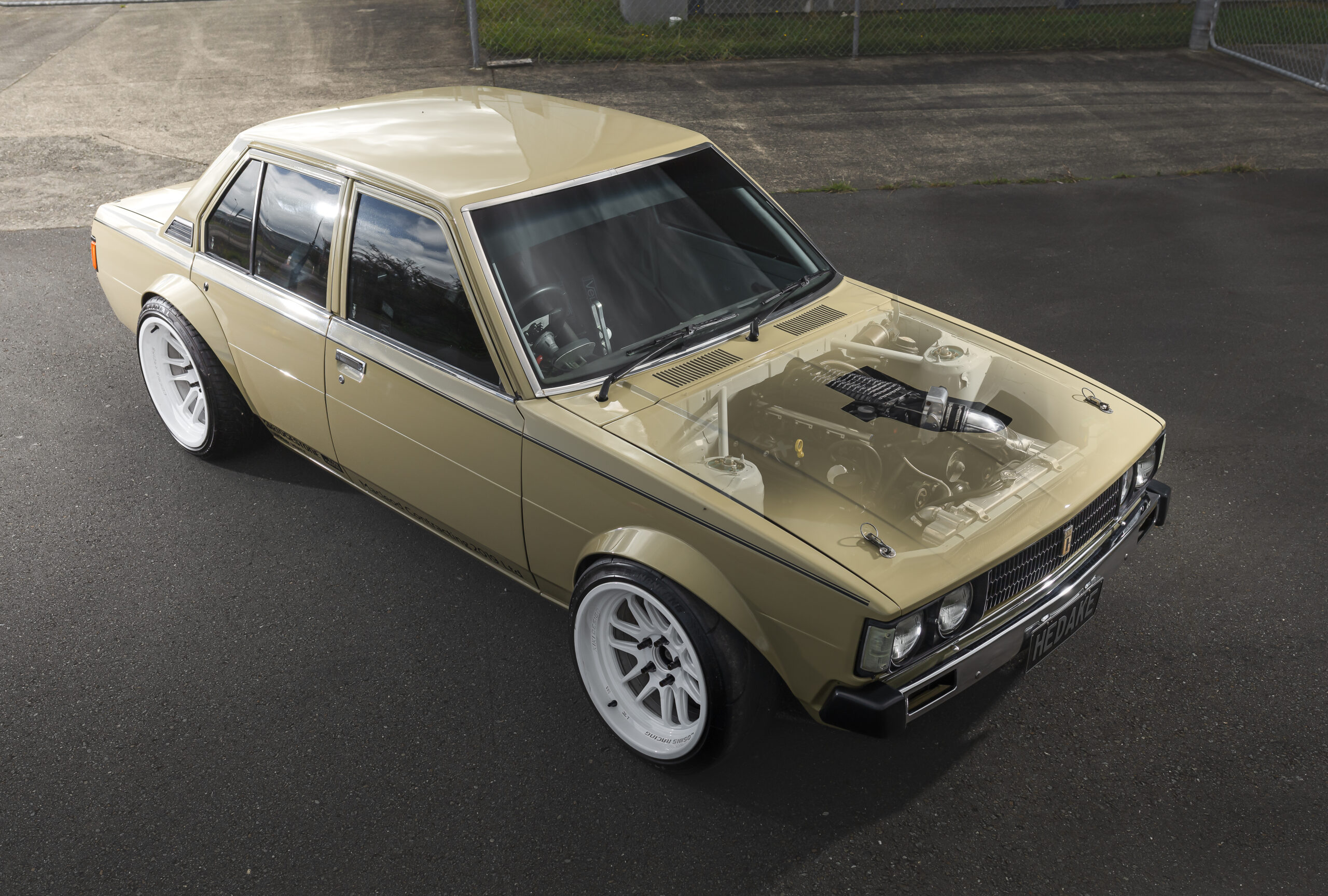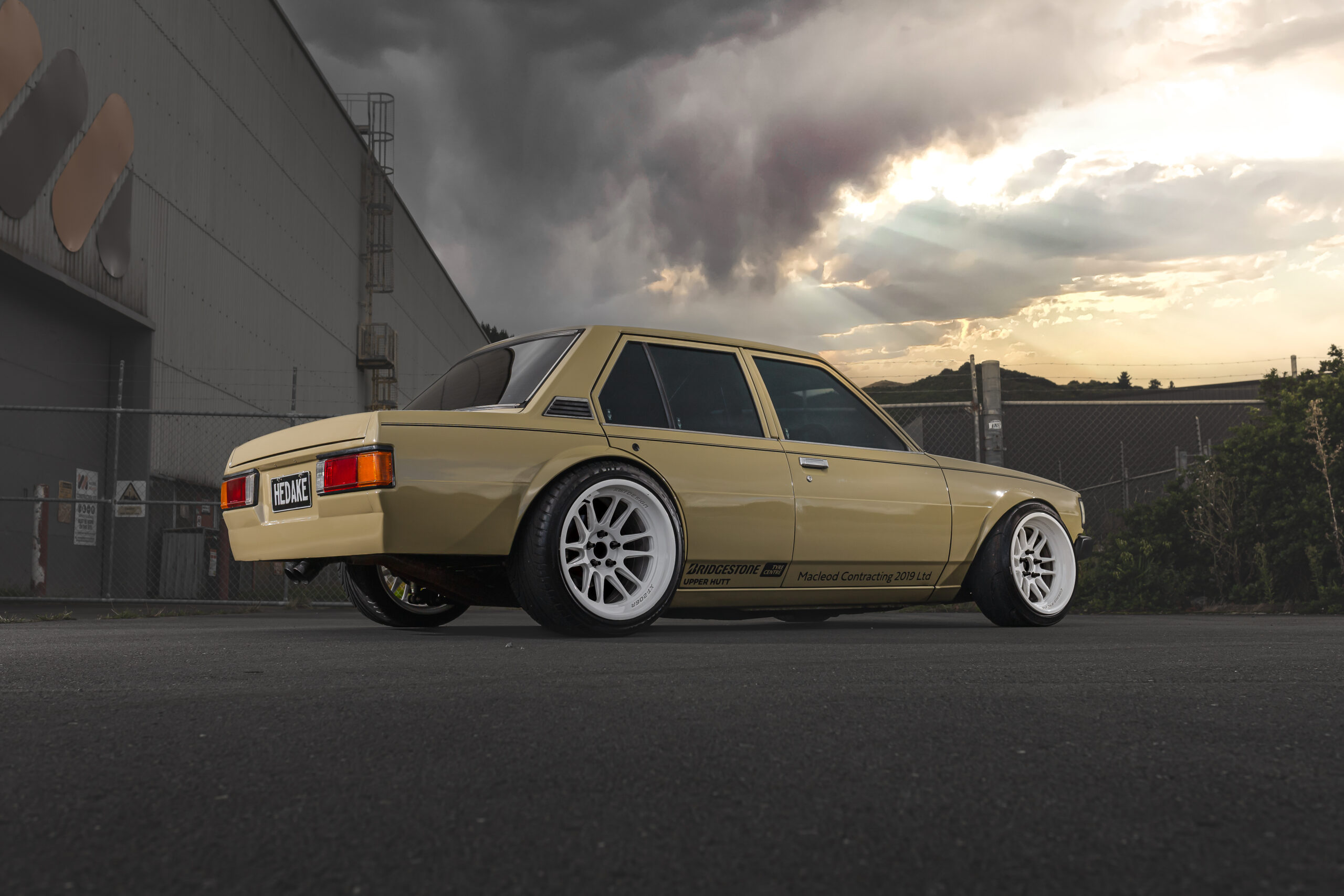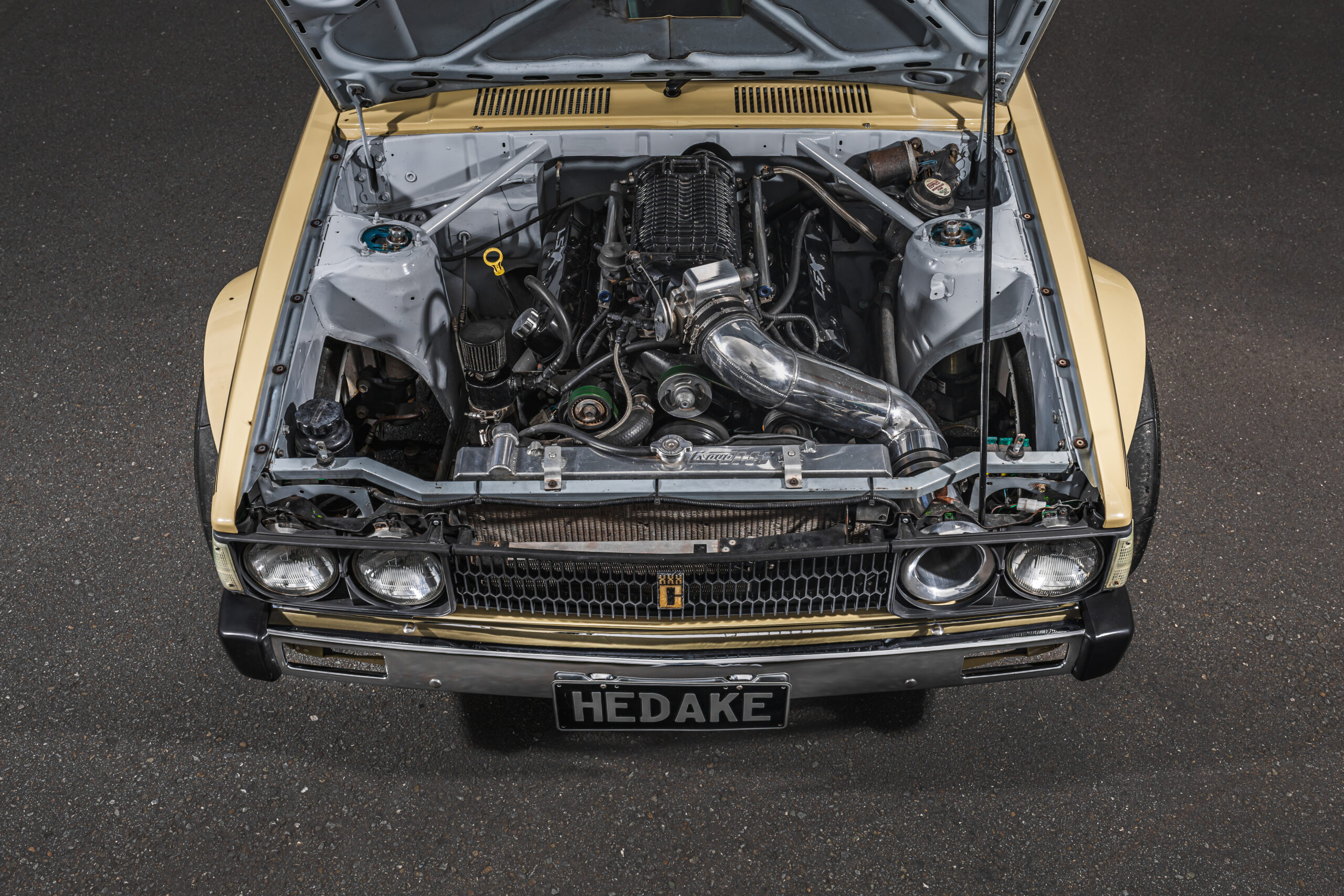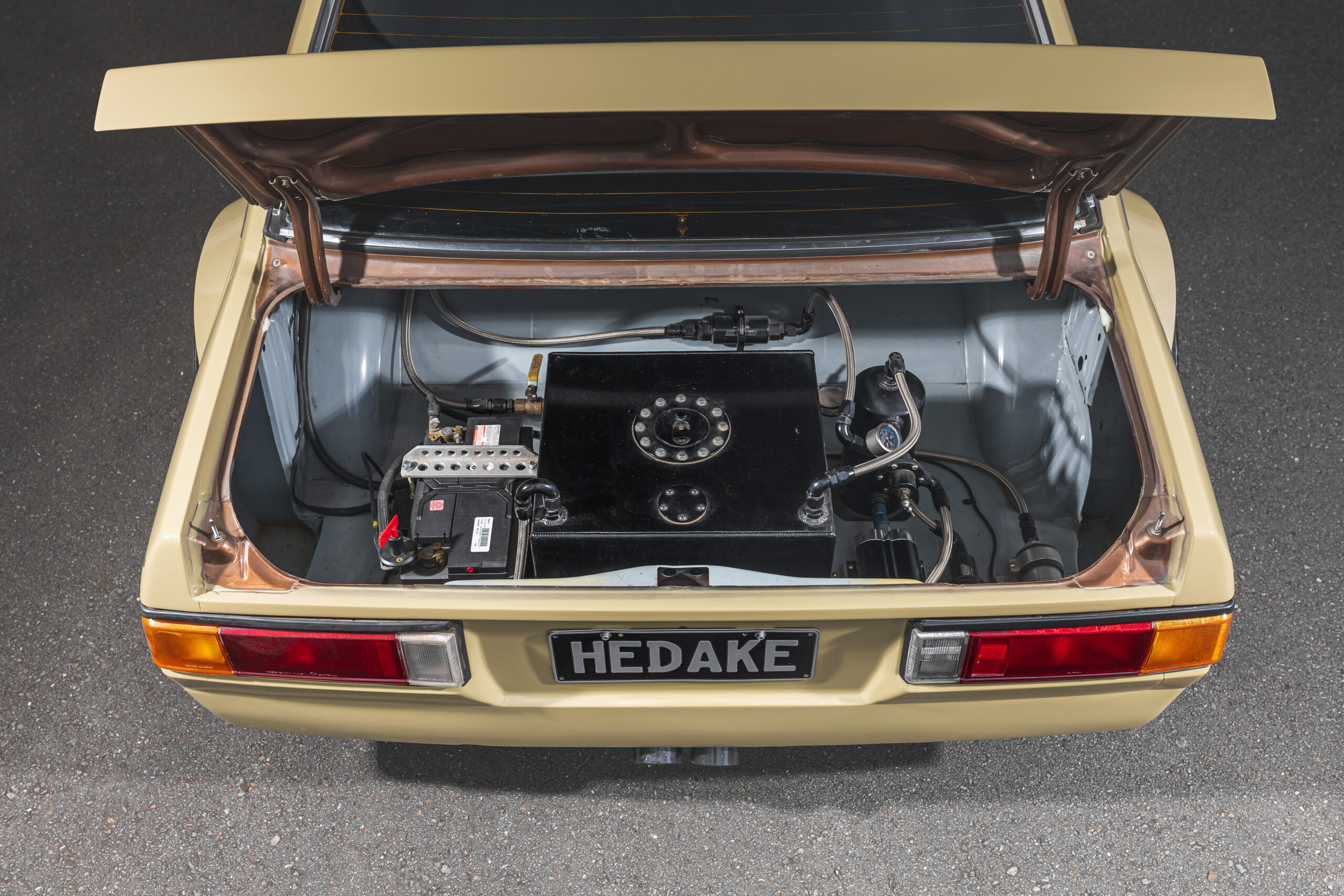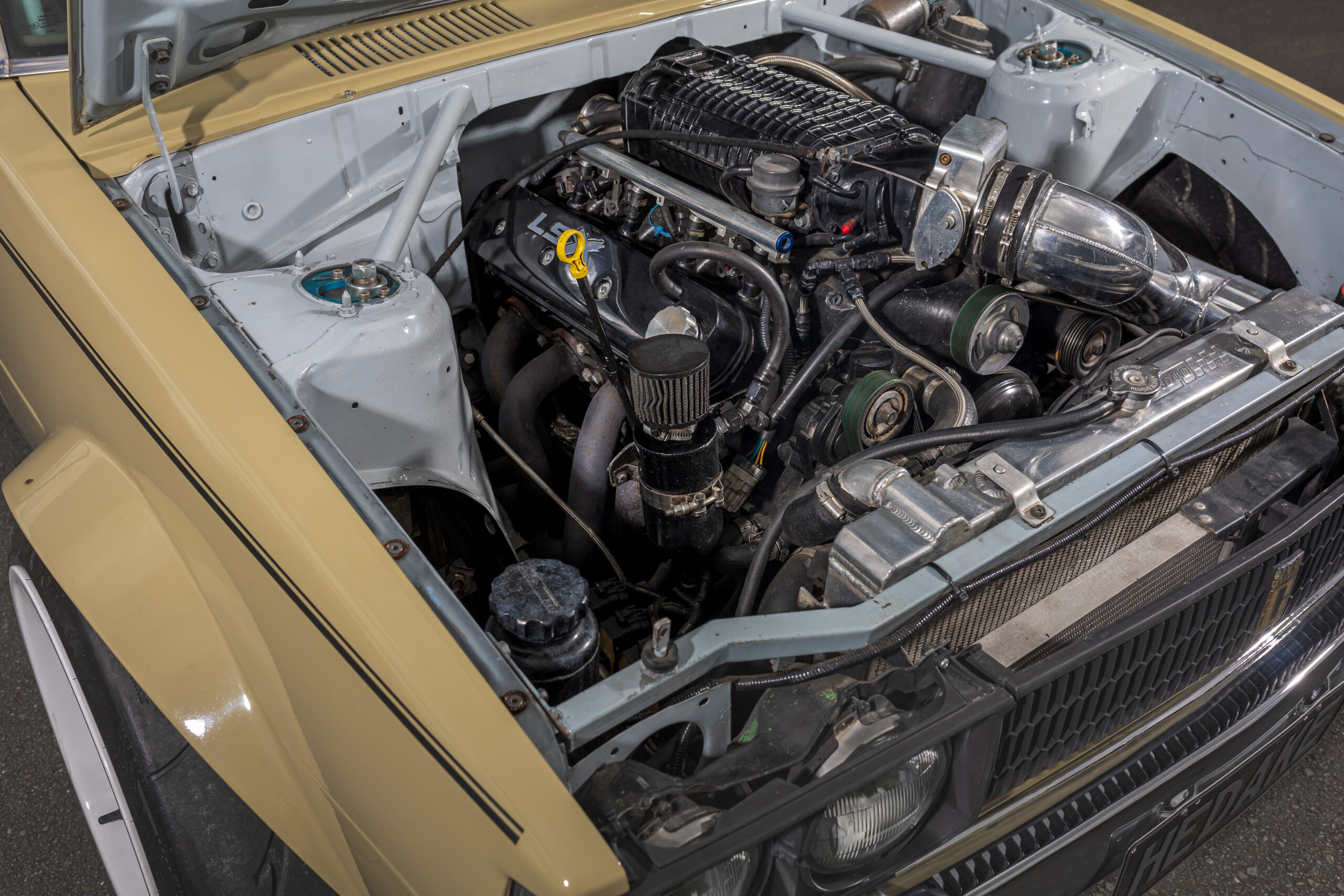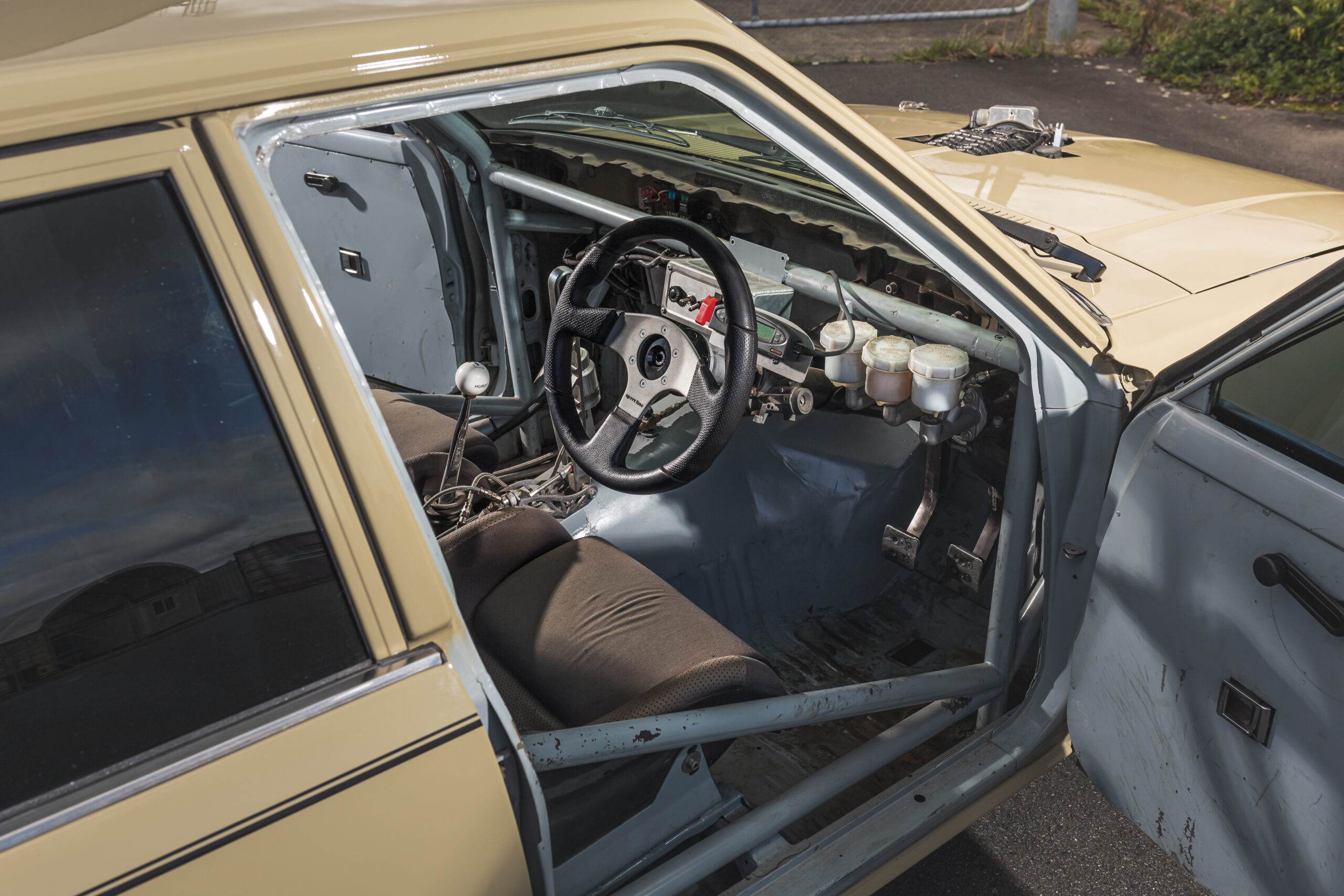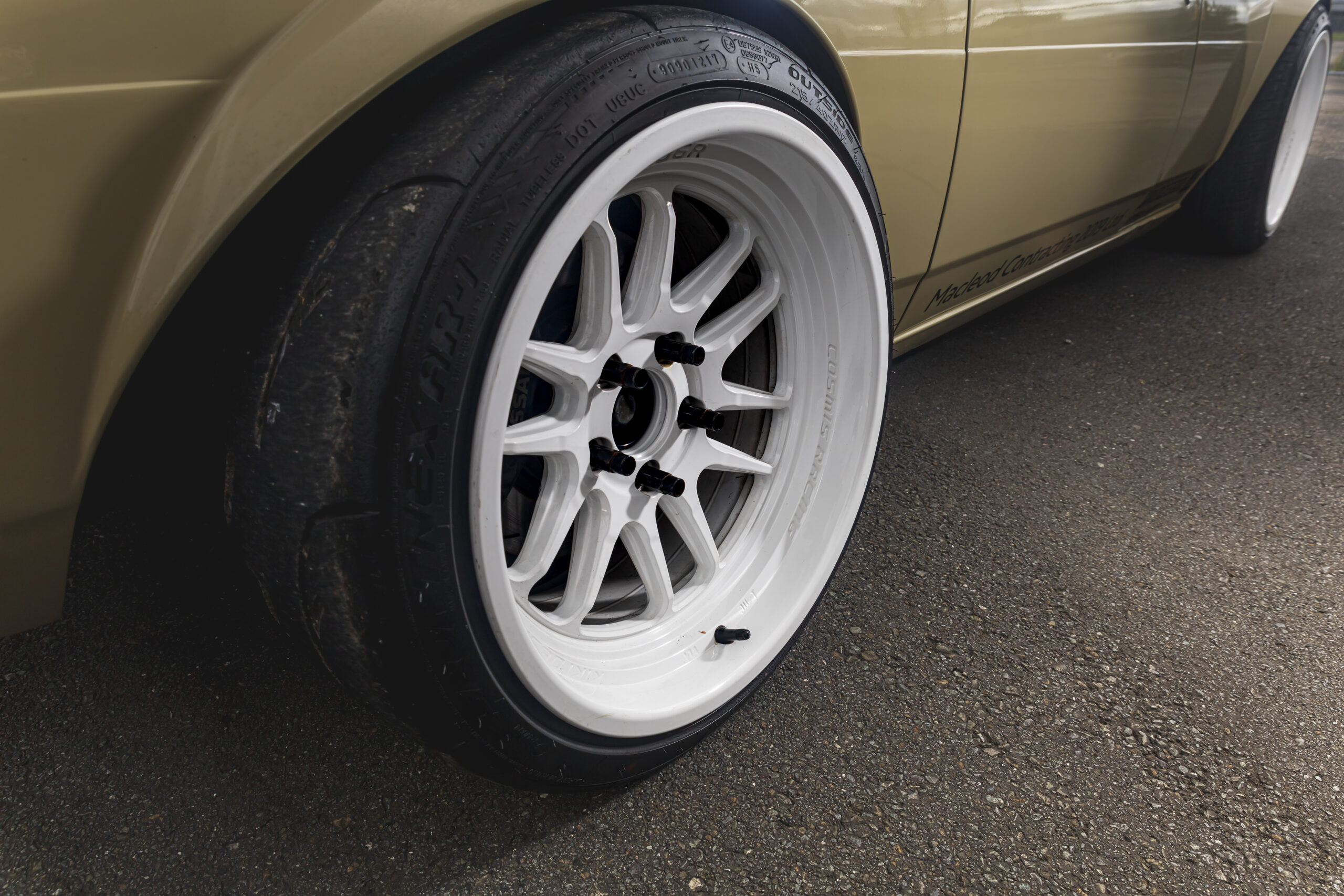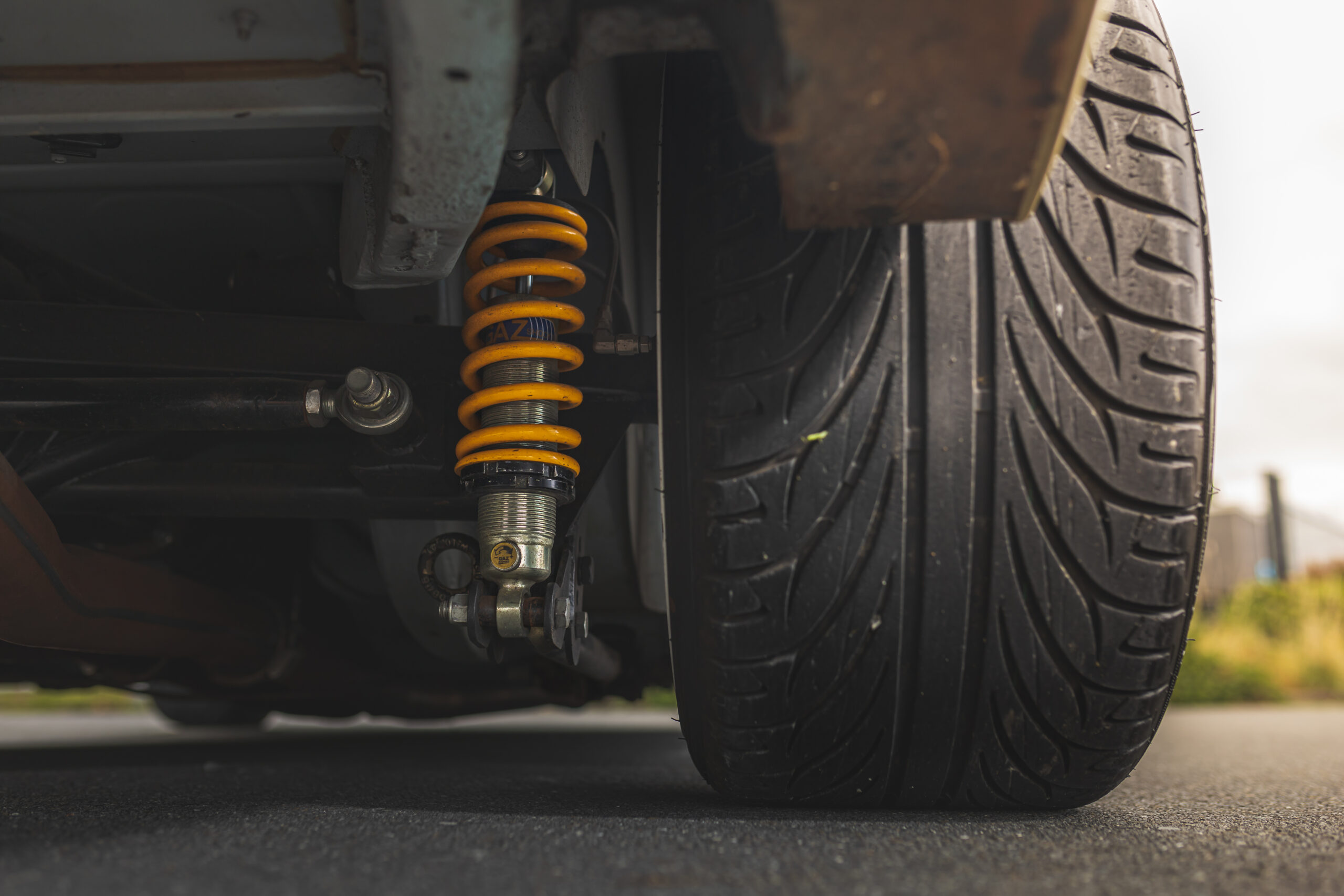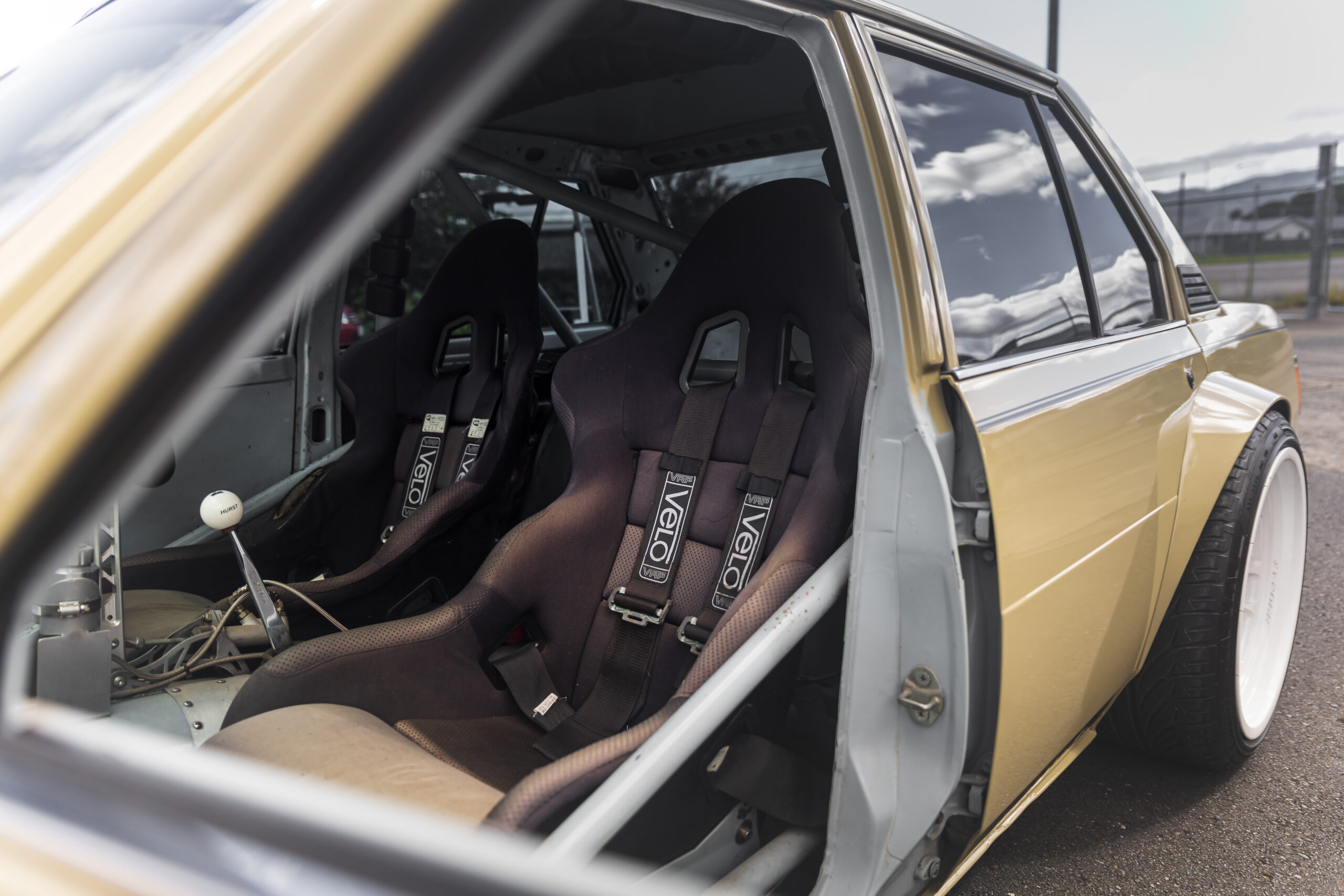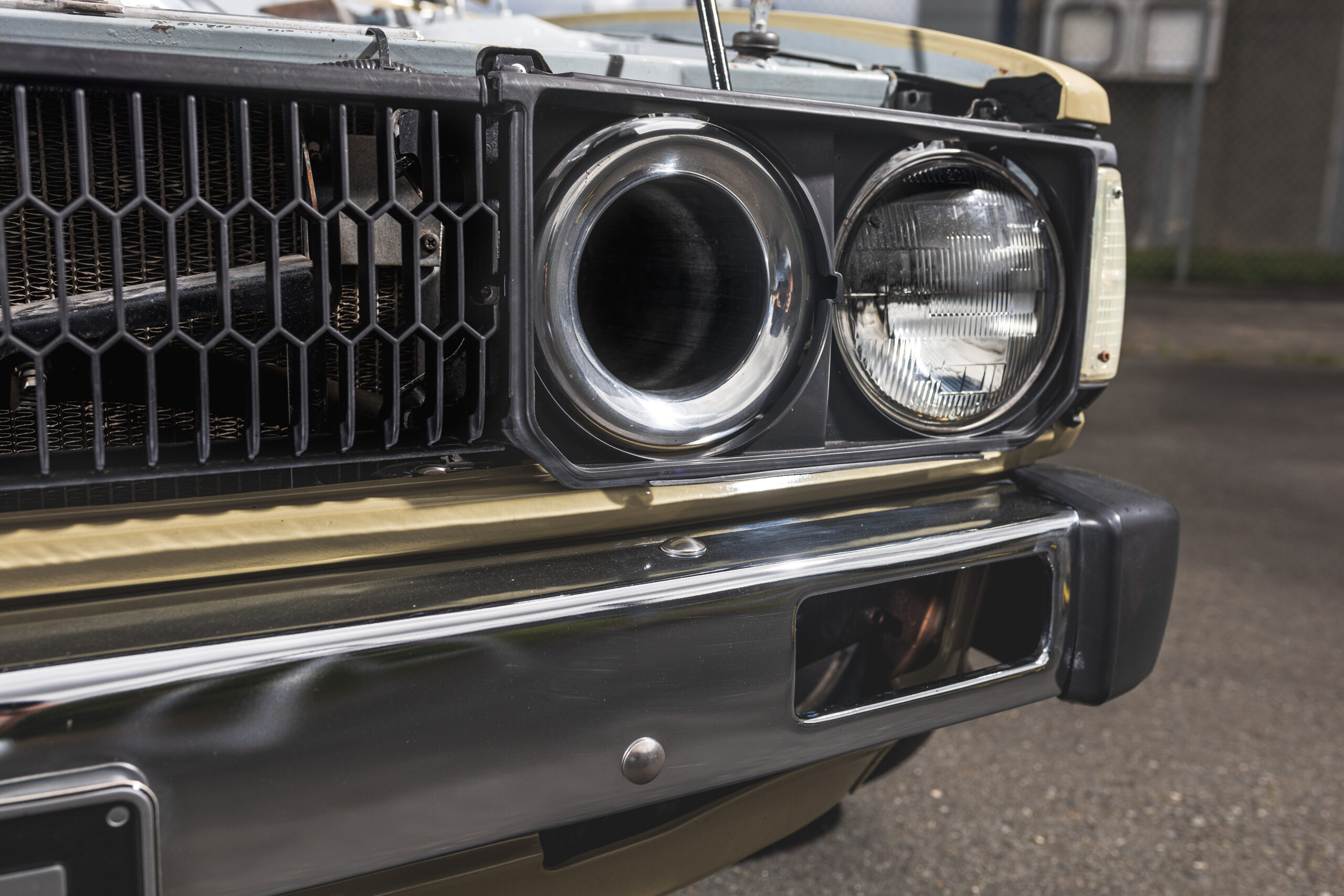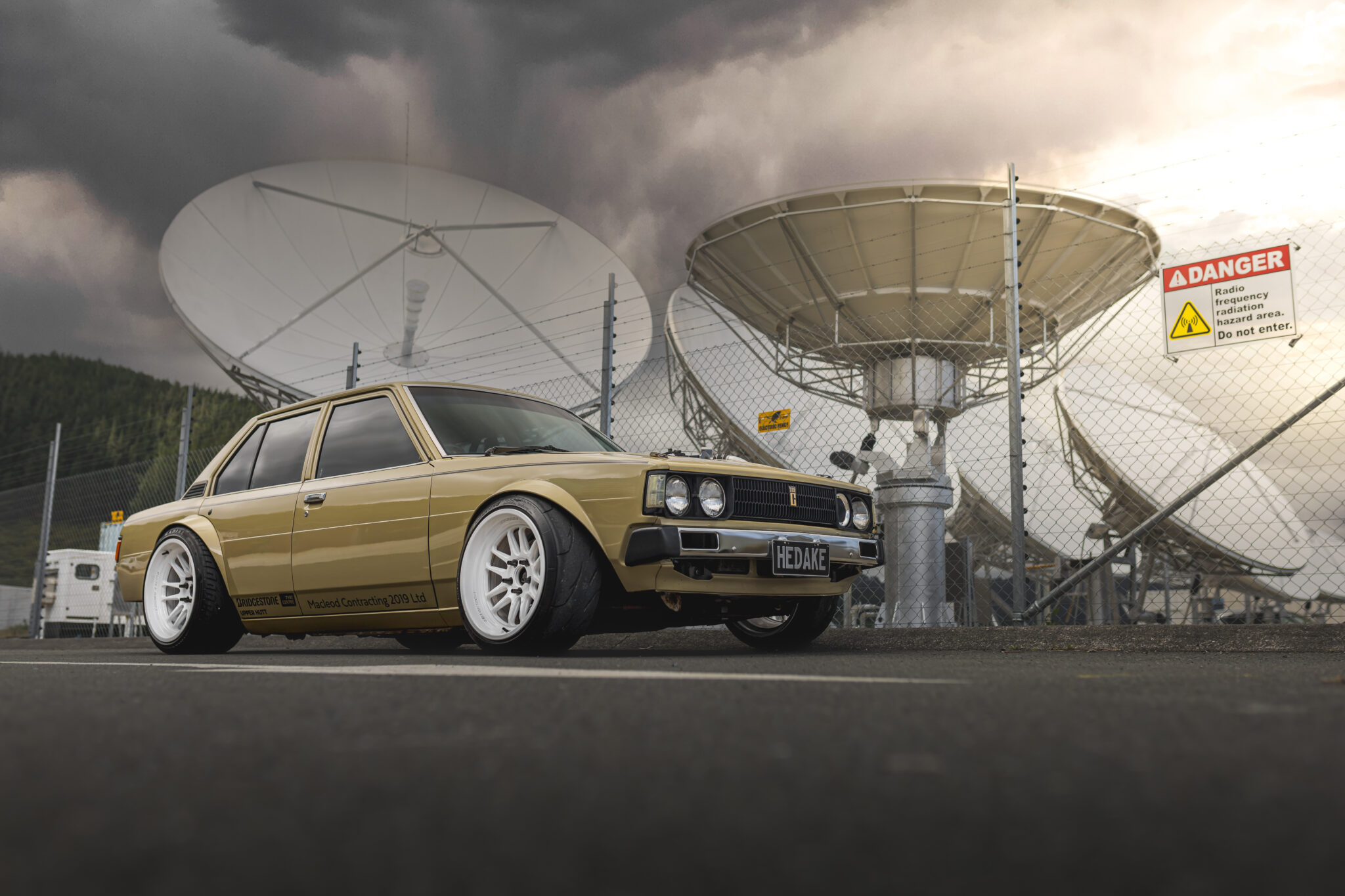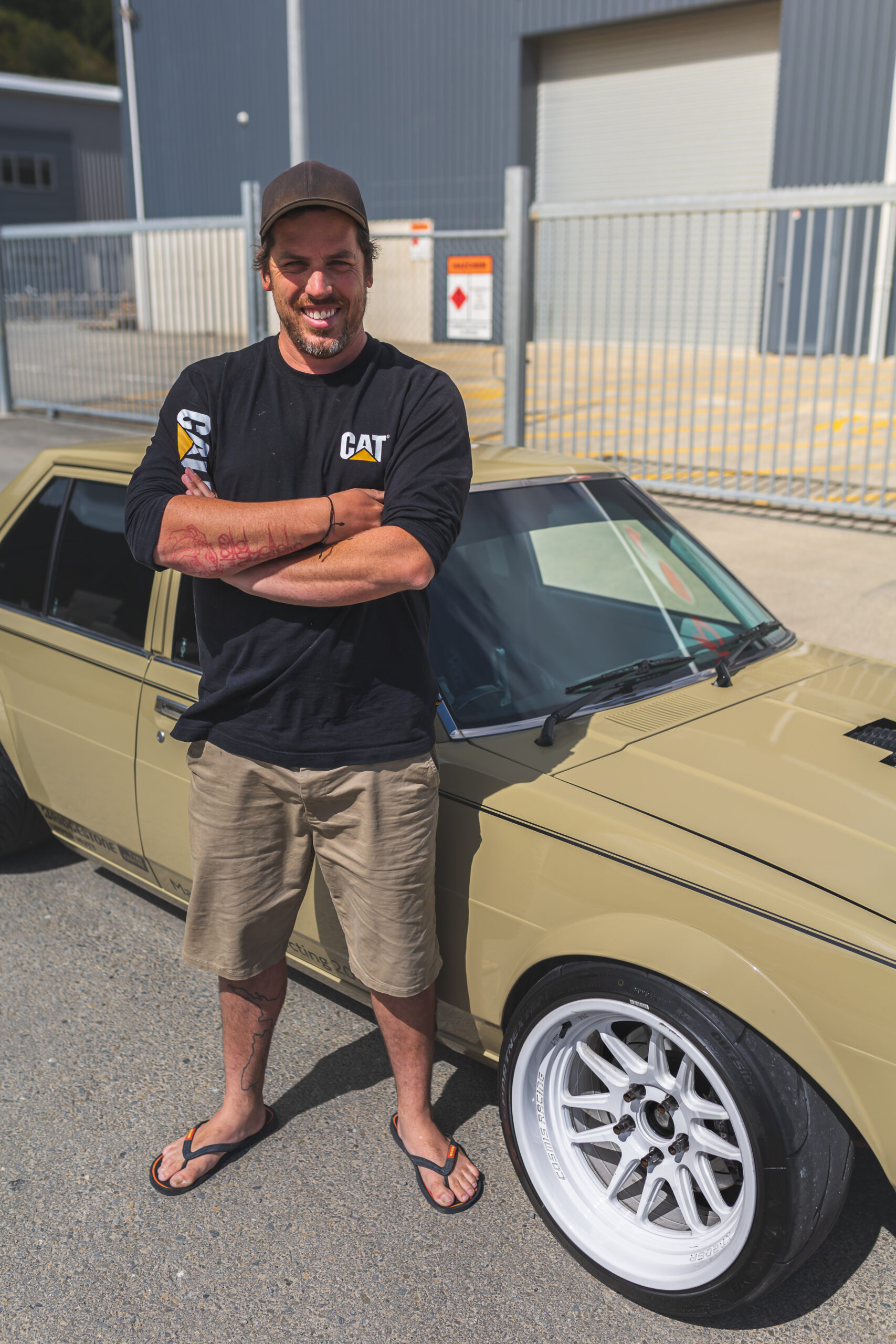Words: Simon Dudding Photos: Rixsta Sammons
Purchasing a car when you’re not looking to buy one isn’t that uncommon. Sometimes things or cars pop up that you can’t say no to. There are lots of reasons not to say no. Personal connection with a vehicle, a long-term dream car, a classic car that brings romantic notions of years gone by, or just plain old peer pressure. Any of these reasons is valid. Importing a car from overseas is pretty common nowadays too. Purchasing a car you weren’t in the market for and sight unseen from overseas — Perth; it’s far enough away it may as well be the US — is still a gutsy move. As it happens, in this case, the reward was well worth the risk.
If you were mentioning an early 1982 DX Corolla to this author, I’d picture myself being ferried around to Saturday sports by mum, as were many of the kids in my generation. This is probably not the reason that Simon Macleod found the 1982 Toyota Corolla with the appropriate number plate of ‘HEDAKE’ a must-have. This particular ’82 Corolla has a tough stance that grabs your attention — that’s if you don’t hear it screaming towards you first.
When Simon stumbled across it on social media some time ago, it was just circumstance that another look was necessary to ‘show’ a good friend. You would be forgiven for having a second look too. The second look was some nine months after first seeing photos of the car online; the major difference this time was that it was advertised for sale!
The opportunity to purchase a unique, drift-spec, blown V8 Toyota was too great. It may have helped that there was a video circulating of Travis Pastrana frying tyres and limiter bashing his way around a skidpad in the KE70. If you know of the Gymkhana videos that Pastrana and the late Ken Block made, you’ll agree that this ’80s Corolla would fit right in. Saying that this is a tried-and-tested build is an understatement.
Now, the car being based in Perth brings its challenges, but having a trusted mate living there, they were able to have a good look over it. Quite handy, as looking at a car online and in person can sometimes have vastly different outcomes when you’re the purchaser. All the reports came back that it was as good in the flesh as it was on the web. The next step was to make some room in the garage and the wallet.
A tough but necessary choice was made to sell the long-term garage resident. The pride and joy that Simon built up from a rusty shell into a show-stopper: the 20B rotary-powered Mazda 1300 is a flawless car that is well known in the import scene. Simon has trailered the Mazda around the country and attended many shows and drive events over his 15 years of ownership. Drive events are something that has become more appealing to Simon, and it’s hard to beat on something you truly love. The Mazda is more a show car; the Toyota is built to be driven, and hard! The quality of the Mazda build is evident, as it was sold to another friend after a discussion about wanting to bring the Toyota over from Western Australia. All the pieces were falling into place.
Initially, it was a fairly easy process to import the Toyota. However, the shipping container took an agonising two months to arrive due to it being offloaded at several ports along the way. After it was landed, the Toyota was retrieved by trailer from the Wellington port.
The tough stance of the KE70 revolves around big wheels and a wide track. It took the previous owner and builder many iterations to reach where it is now. The Perth-based owner built the car over many years, getting wilder with each revision. The car initially went through a few four-cylinder engine combinations before receiving the naturally aspirated 335hp LS1 and Tremec T56 six-speed from an SS Commodore. The body was modified at this time with the addition of a full roll cage, set-back firewall, and custom rear end.
These days, 18-inch wheels aren’t really regarded as large, particularly when you consider that 19-inch wheels are a standard fitment for 2022 Mustangs when they leave the factory. The size of the wheel arch is a key distinction between old Japanese cars and modern vehicles. The factory-installed 13-inch wheels on the KE70 Corolla make the wheel arch openings noticeably smaller. When you fit wheels five inches bigger than factory, you’re going to have to do some work to fit them or you’ll just create a donk! The wheels are from Cosmis Racing Wheels USA with 17×8-inch at the front and the big 18×11 inch in the rear. The tyres that don’t hang around for long are 215/45/R17 up front and 265/35/R18 in the rear.
This tyre sizing keeps the overall height of the wheel/tyre combination to under an inch difference in diameter front to rear — keeping the rake of the car as flat as possible adds to the overall look. The comparatively narrow front tyre allows for a bunch of steering lock with the aid of clearanced front inner fenders. The fabricated flares are all steel and built this way for durability. If you’ve ever witnessed what a disintegrating tyre does to a fibreglass bolt-on flare, you’ll understand why. With the desired ride height set, the wheel arches were extended well past the factory openings to fit the new wheels. The full roll cage links up with the fabricated rear end and panel work that allows the rear doors to still operate even with the large tubs, while the body was cleaned up and painted in the classic factory-option brown.
Interior design is minimal and functional. Even with a minimal screen to show important engine data, the dashboard failed to make it. There are bucket seats and safety harnesses to keep you in front of the KW steering wheel and custom pedal box, where all of the fun controls are conveniently located. While the Hurst shifter thumps gears through the T56 six-speed box, the billet drift brake grabs the rear brake rotors with its own set of callipers.
After killing tyres and sliding its way around the Perth streets and race tracks, the Corolla got a freshen up by way of more power. Added to the top of the LS1 is a Harrop 122 supercharger driven through the back of the engine via the Gilmer belt drive. Still retaining the factory ECU, the engine winds its way to an impressive 629hp on a hub dyno. Even with double the amount of power, the engine remains reliable, which is why the LS swap is so popular.
Fuel is supplied by the mighty Holley Dominator 1800 through -10 lines from the boot-mounted fuel system. The system is well laid out and is rated well over what is required. It should keep the LS healthy in even the most demanding situations. Stainless-steel Xforce headers feed a straight-piped three-inch twin-exhaust system that is tucked away under the car all the way to the rear valance — loud is an understatement!
The T56 six-speed transmission gets the power transferred through an Extreme twin-plate clutch and fed rearwards. To give the Toyota purists a break, the diff remains a Toyota factory option — not on this Toyota in particular but a Hilux. The factory Hilux eight-inch ring gears and 31-spline axles are pretty tough and well up for the task. The housing just required some additional bracing to reduce the flex, along with new suspension brackets.
A gear swap to a ratio of 3.7:1 keeps the revs in the right spot. The factory suspension set-up, as you’d expect, has well and truly been ditched for a tried-and-true custom four-link. The equal-length chromoly bars attach to the rear of the roll cage and are located via a Panhard bar. Adjustable coilover shocks keep the rear end firmly planted and top off a simple-yet-effective set-up. The front suspension is derived from Nissan Silvia uprights, with S13 coilovers and a K-Fab lock kit. The Nissan suspension conversion aids to the ease of the brake set-up — the Japanese company is known for its ease of cross swapping parts across different chassis platforms.
The brakes consist of four-piston callipers from a Skyline up front and dual two-piston callipers in the rear — one for the main brake circuit and the other for the hydraulic handbrake. The brake rotors have been upgraded to the slotted variety to help slow the car in spirited driving situations.
After sitting in the shed for 11 months, a few minor issues have been addressed, but Simon is generally pleased with the Toyota. The build quality is more than adequate. The car has already attended several events and received a great deal of attention. It does blur the lines between import and domestic, with Toyota being more domestic for New Zealand if you want to argue the case, but the attention it receives is overwhelmingly positive. It’s a unique build that you wouldn’t normally see.
Simon bought the Toyota to be used and used often. The recent 4&Rotary track-day event was rained out by Cyclone Gabrielle and the most recent drive day at Manfeild raceway was a bit too busy to let things properly loose for the first time. The spare rear wheels and tyres have had it easy so far, but it shouldn’t stay that way for long.
_______________________________________________________________________________________________________
This article originally appeared in NZV8 issue 215





